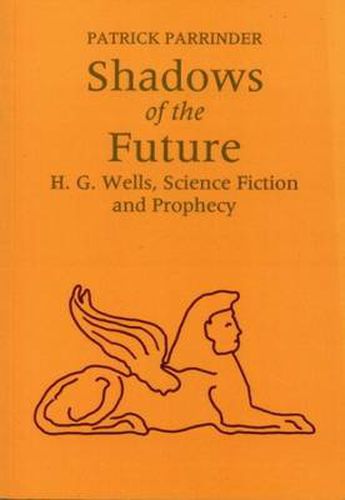Readings Newsletter
Become a Readings Member to make your shopping experience even easier.
Sign in or sign up for free!
You’re not far away from qualifying for FREE standard shipping within Australia
You’ve qualified for FREE standard shipping within Australia
The cart is loading…






H.G. Wells - the inventor of the concept of the time machine - and the phrase the shape of things to come - described his life’s work as one of critical anticipation . This work identifies this attempt to imagine possible futures as the unifying principle behind Wells’s diverse and sometimes wayward literary career. The book both unravels the complex layers of meaning in The Time Machine and shows how, throughout his life, Wells sought to exploit the potential of literary and cultural prophecy in new ways. He has also been described as Europe’s first futurologist. In this work Wells’s assumption of the prophet’s role is related to his championship of the modern scientific outlook, and to the theory and practice of science fiction and utopian literature. Professor Parrinder explores the connections between novelty and repetition, between imagining the future and imagining the past, and between prophesy and parody as literary modes. Wells’s science fiction is re-examined both as the projection of a cosmology implicit in the writings of Darwin and Huxley, and as a new variation on the Romantic and Enlightenment themes of such earlier authors as Mary Shelley, Blake and Gibbon. Later chapters relate Wells’s fiction to his non-fiction, and look at the uneasy relationship of his utopianism to literary prophecy, and at the paradoxes inherent in the militant internationalism of the prophet at large . Finally, Wells’s influence is traced in a study of the anti-utopian fictions of Zamayatin and Orwell, as well as a broad account of the connections between science fiction and the scientific outlook down to our own time.
$9.00 standard shipping within Australia
FREE standard shipping within Australia for orders over $100.00
Express & International shipping calculated at checkout
H.G. Wells - the inventor of the concept of the time machine - and the phrase the shape of things to come - described his life’s work as one of critical anticipation . This work identifies this attempt to imagine possible futures as the unifying principle behind Wells’s diverse and sometimes wayward literary career. The book both unravels the complex layers of meaning in The Time Machine and shows how, throughout his life, Wells sought to exploit the potential of literary and cultural prophecy in new ways. He has also been described as Europe’s first futurologist. In this work Wells’s assumption of the prophet’s role is related to his championship of the modern scientific outlook, and to the theory and practice of science fiction and utopian literature. Professor Parrinder explores the connections between novelty and repetition, between imagining the future and imagining the past, and between prophesy and parody as literary modes. Wells’s science fiction is re-examined both as the projection of a cosmology implicit in the writings of Darwin and Huxley, and as a new variation on the Romantic and Enlightenment themes of such earlier authors as Mary Shelley, Blake and Gibbon. Later chapters relate Wells’s fiction to his non-fiction, and look at the uneasy relationship of his utopianism to literary prophecy, and at the paradoxes inherent in the militant internationalism of the prophet at large . Finally, Wells’s influence is traced in a study of the anti-utopian fictions of Zamayatin and Orwell, as well as a broad account of the connections between science fiction and the scientific outlook down to our own time.